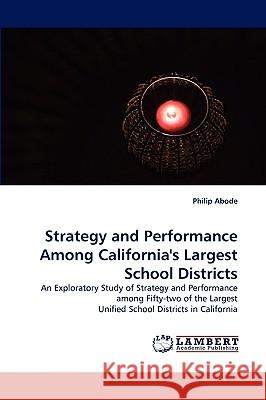Strategy and Performance Among California's Largest School Districts » książka
Strategy and Performance Among California's Largest School Districts
ISBN-13: 9783838318417 / Angielski / Miękka / 2010 / 112 str.
Following the publication of "A Nation At Risk" in 1983 by National Commission on Excellence in Education, school districts came under increased public demand for greater educational performance. Olson and Gerald (1998)noted that "when people talk about the problems in public education, theyre usually not talking about suburbs or small towns. Theyre talking about big-city schools--specially the ones that serve poor children." In response, many superintendents were persuaded by two leading professional bodies: Association for Supervision and Curriculum Development (ASCD) and the American Association of School Administrators (AASA) to embrace strategic planning. For more than 20 years, the focus of research was on district strategic planning processes and planning participants attitudes and experiences. No study could be found that examined the content of district strategy and its relationship to performance. Organizational strategy is quite easily the most overlooked concept in the management of school districts. Strategy is the organizational DNA; the genetic force behind organizational behavior and performance. This study fills the gap in the district strategy knowledge base.











